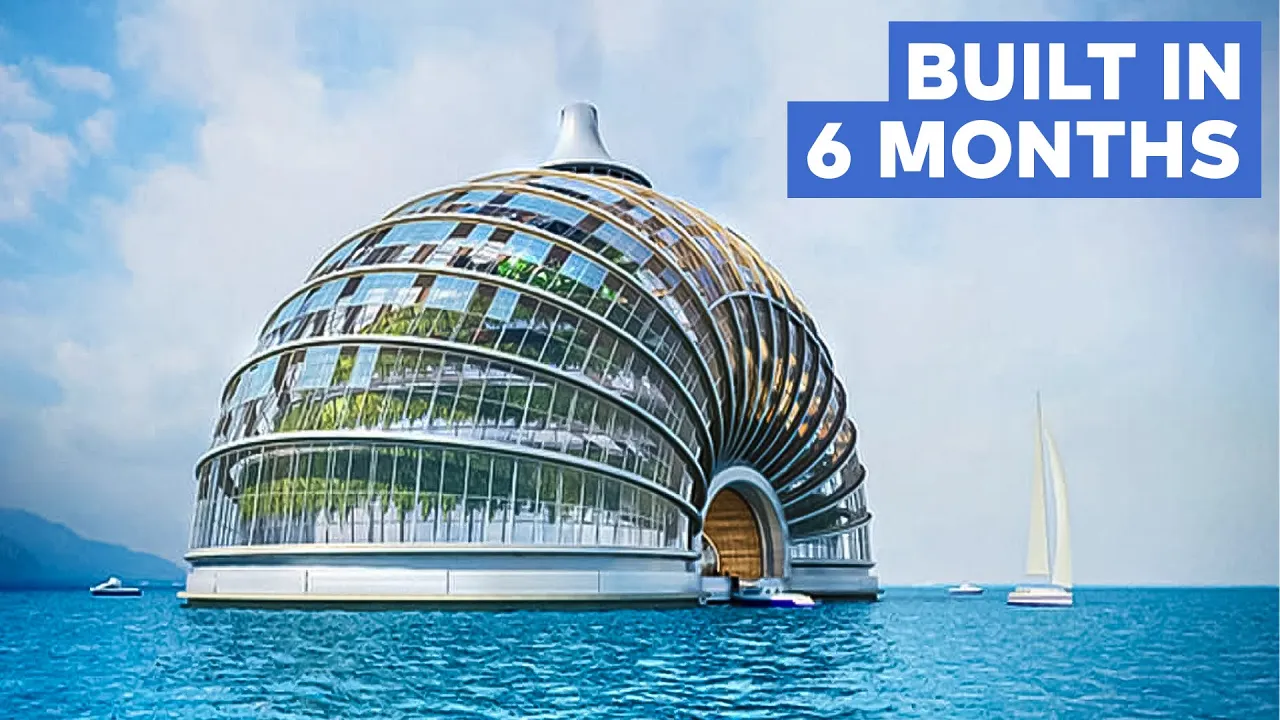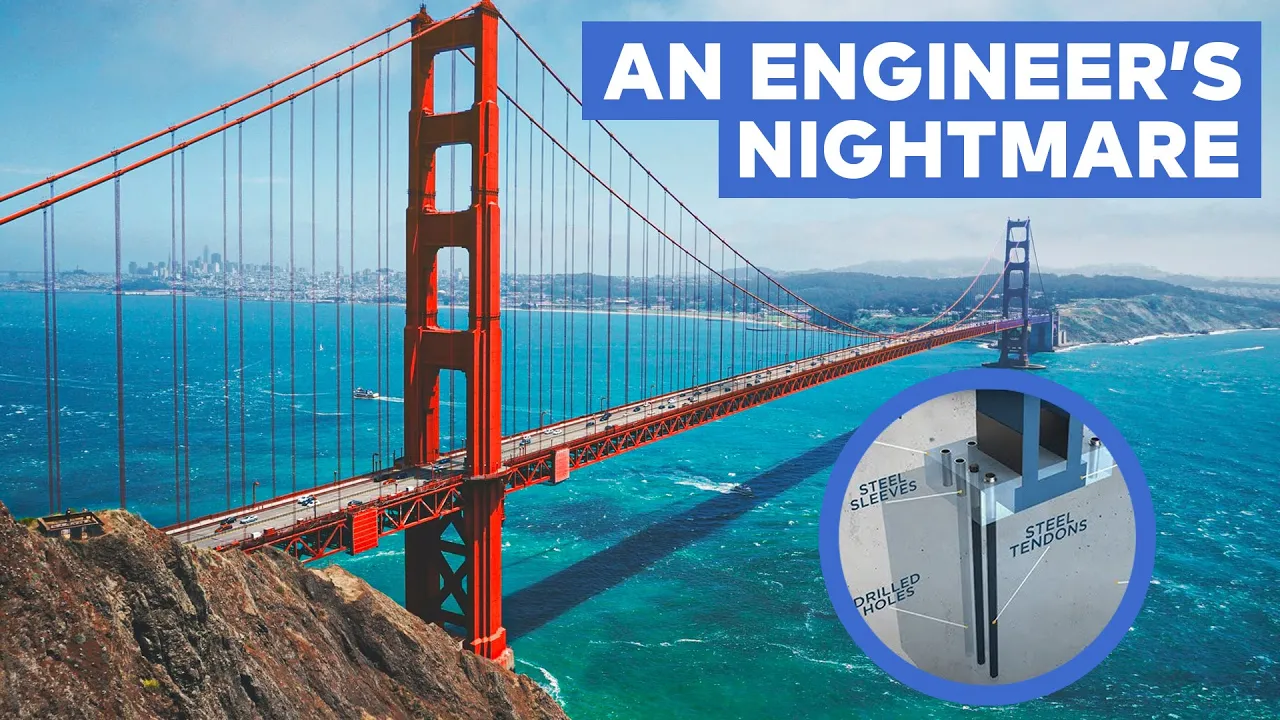Did you know that the original Golden Gate Bridge collapsed during an earthquake in 1906, removing a crucial crossing over the Golden Gate Strait? While the details of this earlier bridge remain unclear, what is certain is that one of the most devastating natural disasters in American history, the 1906 San Francisco earthquake, flattened half of the city and ignited fires that consumed the rest.
San Francisco’s resilient citizens rebuilt their city and, after waiting until 1937, finally saw the completion of a new Golden Gate Bridge. This majestic structure became an engineering marvel and a world-famous landmark. The journey to its creation was long and filled with skepticism, as many doubted that such a bridge could be built due to the harsh weather, deep waters, and seismic risks. However, the Golden Gate Bridge was completed between 1933 and 1937 at a cost of $35 million—equivalent to about $1.3 billion today.
So, what’s the story behind the Golden Gate Bridge? How was it constructed, and why does this historic bridge stand out as a unique feat of engineering?
Interesting Facts
The idea to reconnect San Francisco and Marin County over the Golden Gate Strait began in 1919. However, it wasn’t until January 1933 that construction finally commenced on the Golden Gate Bridge. When it was completed, the bridge was the longest suspension bridge in the world, a title it held for nearly 25 years until the Verrazano-Narrows Bridge in New York opened in 1964. Today, as the bridge celebrates its 83rd anniversary, it remains the second-longest suspension bridge in the U.S. and is ranked as one of the most admired structures by American architects.
On a typical weekday, over 120,000 vehicles cross the Golden Gate Bridge, which has only been closed three times due to extreme weather conditions. The bridge spans 1.7 miles in length, is 90 feet wide with six lanes for vehicles, and includes two sidewalks for pedestrians. Its center span deck rises about 220 feet above the water, and the bridge can support up to 1,200 cars at once, equating to 3 million tons of weight pressing down on its suspension system during rush hour.
On May 24, 1987, the bridge was closed to vehicles for its 50th-anniversary celebration, allowing 300,000 pedestrians to gather on the central span. The crowd was so dense that the bridge’s span actually flattened, dipping seven feet. Fortunately, this was within the bridge’s design parameters, as it can sway up to 27.7 feet side to side and flex 10.8 feet up and down. The bridge’s design is so robust that even if one section were to fail, it wouldn’t cause a catastrophic collapse of the entire structure.
Designing a Mega Modern Structure With a Primitive Calculator
The design process for the Golden Gate Bridge began in 1919, led by the legendary engineer Joseph Strauss. At that time, engineers didn’t have access to modern computers or even basic electronic calculators. Instead, they relied on slide rules—simple devices that allowed them to perform multiplication, division, and calculate squares, roots, and trigonometry functions based on logarithms.
In contrast, today’s engineers use advanced computer software to perform complex calculations, assess structural integrity, and simulate tests without needing physical models. Despite these limitations, Strauss and his team managed to create a design that was both practical and aesthetically pleasing.
Initially, Strauss proposed a hybrid design featuring a suspension span supported by cantilever trusses. However, by 1929, consulting engineers Leon Moisseiff and O.H. Ammann convinced Strauss to adopt the more elegant all-suspension bridge design that we see today. Using only slide rules, pencils, and paper, they produced blueprints for an engineering marvel that could withstand the harshest weather, immense weight, and severe earthquakes.
To validate their design, the engineers constructed a 1:56 scale steel tower model and found that their calculations were accurate. They also conducted geological tests at the site of the south tower to ensure it could support the bridge’s weight.
Construction Timeline
The construction of the Golden Gate Bridge officially began on January 5, 1933. It was a monumental task, requiring precise coordination and immense resources. By March 1934, the San Francisco tower access trestle was ready, extending 1,100 feet offshore. Despite setbacks such as damage caused by a steamship collision and strong winds, the towers on both the San Francisco and Marin sides were completed by November 1934.
The next critical step was to install the main cables. In October 1936, the cable spinning and compression were completed, and by November 1936, the two sections of the bridge’s main span were joined. A bishop blessed the span, and the roadway was completed in April 1937. The final product was a stunning bridge that quickly became an iconic symbol of engineering excellence.
Dimensions and Engineering
The Golden Gate Bridge’s total length, including approaches, is 1.7 miles. The suspension span, which includes the main and side spans, stretches 1.2 miles, with a distance of 4,200 feet between the two main towers. Each tower rises 746 feet above the water and 500 feet above the roadway.
The bridge’s original deck and supporting stringers weighed 166,397 tons, but after a 1986 refurbishment, the weight was reduced to 154,093 tons. The bridge’s design allows for significant deflection and load capacity, with the midspan able to move downward by 10.8 feet under weight and pressure, and sway side to side by up to 27.7 feet.
The bridge’s two main cables, each passing over the tops of the towers, are secured at either end in giant anchorages. These cables support the bridge’s 250 pairs of vertical suspender ropes, which were replaced between 1972 and 1976. Engineers have also periodically re-tensioned the main cable bolts to maintain the bridge’s structural integrity.
Today, the Golden Gate Bridge stands as a testament to the power of innovation, problem-solving, and the belief that megaprojects can overcome even the most daunting challenges to improve economies and connect communities.
Conclusion
The Golden Gate Bridge is more than just a crossing over the Golden Gate Strait; it’s a symbol of human ingenuity and resilience. Its construction, completed with tools that seem primitive by today’s standards, resulted in a structure that has withstood the test of time and continues to inspire awe around the world.
Thank you for reading. If you enjoyed learning about the engineering marvel that is the Golden Gate Bridge, please like, share, subscribe, and hit the bell icon to stay updated on more amazing stories about the world’s most incredible megaprojects.



